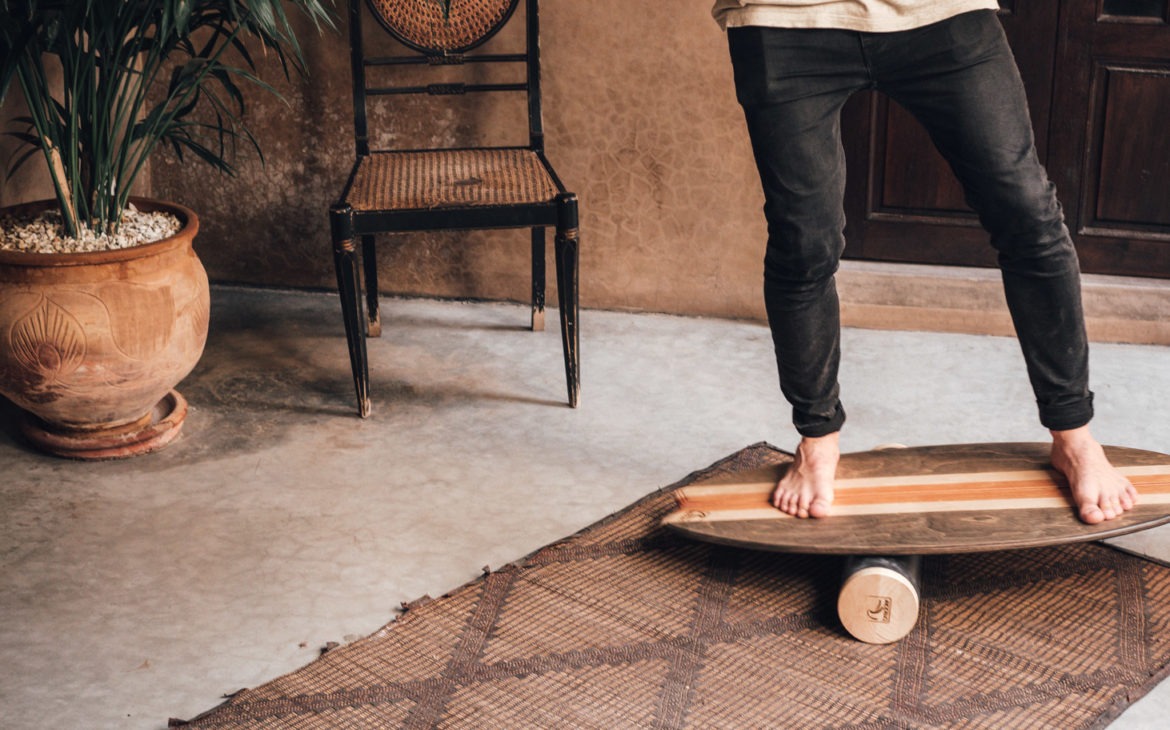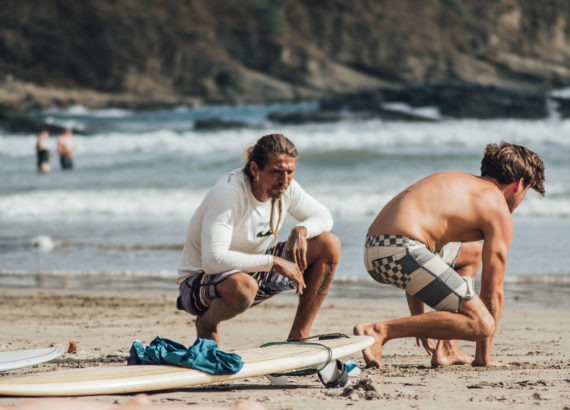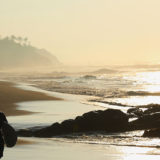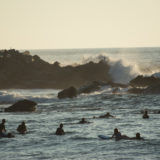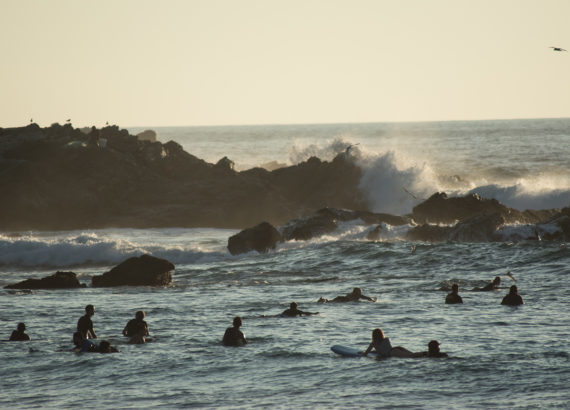There is one moment where you cannot have any excuses. It’s black ‘n’ white. You spotted a wave, you paddled to the point where you wanna take off, you paddle to catch the wave. Once you pushed your board down, it all matters! Focus, balance and you are on the wave. Each time, this moment feels greatly rewarding and equally addicting. This article discusses ways to get better in that very moment – with exercises to improve balance for surfing.
You can rest behind the impact zone when your muscles are tired and stretch if you feel rusty in the water, but as soon as your feet touch the board you need to be able to balance out the dynamic forces that appear right after the popup.
Especially for surfers who are not fortunate enough to live close to the ocean (like myself), improving your balance is hard to achieve. To prepare for the mentioned forces, I have included several balance exercises in my training. Frankly speaking, I didn’t focus enough on them and, as a result, I struggled.
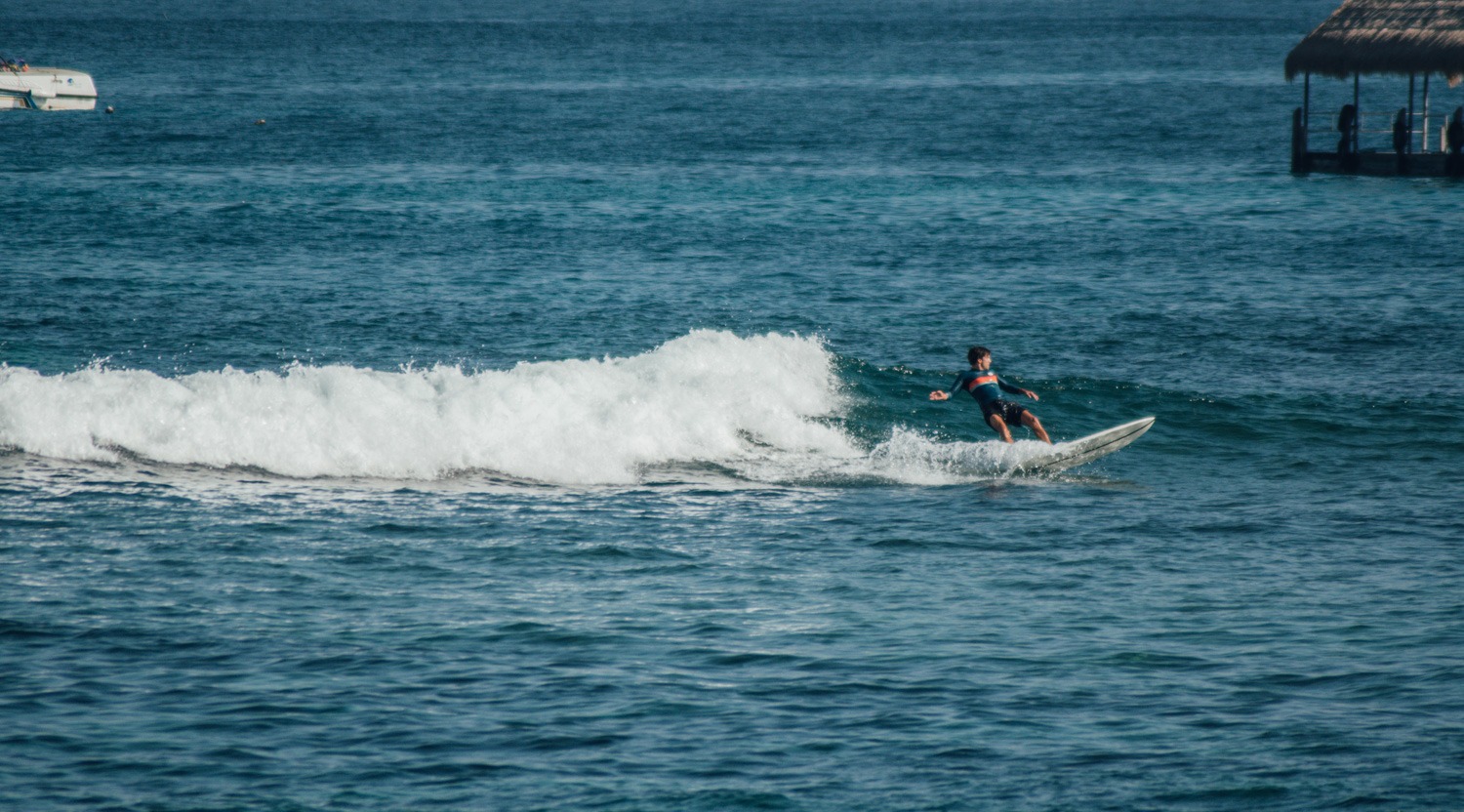
As this was frustrating, I decided to look into alternatives at home on how I could finally improve my balance for surfing. The frustration from this led me into looking for alternative ways that I could finally improve my balance.
Balance Board for Surf Training
The Balance Board I started to use was fun and easy for me to include in my routine. Beyond my workout routine, I can use it while watching a movie, cheering for the big boys at WSL (World Surf League) or just as a time filler while waiting for Ani getting ready. The five minutes here and there quickly added up and my balance continually improved. The balance board slowly became one of my favorite surfing exercises.
As the first seconds on a balance board feel extremely tough, I will share a quick guide with you on how to approach working on an improved balance for surfing with a balance board.
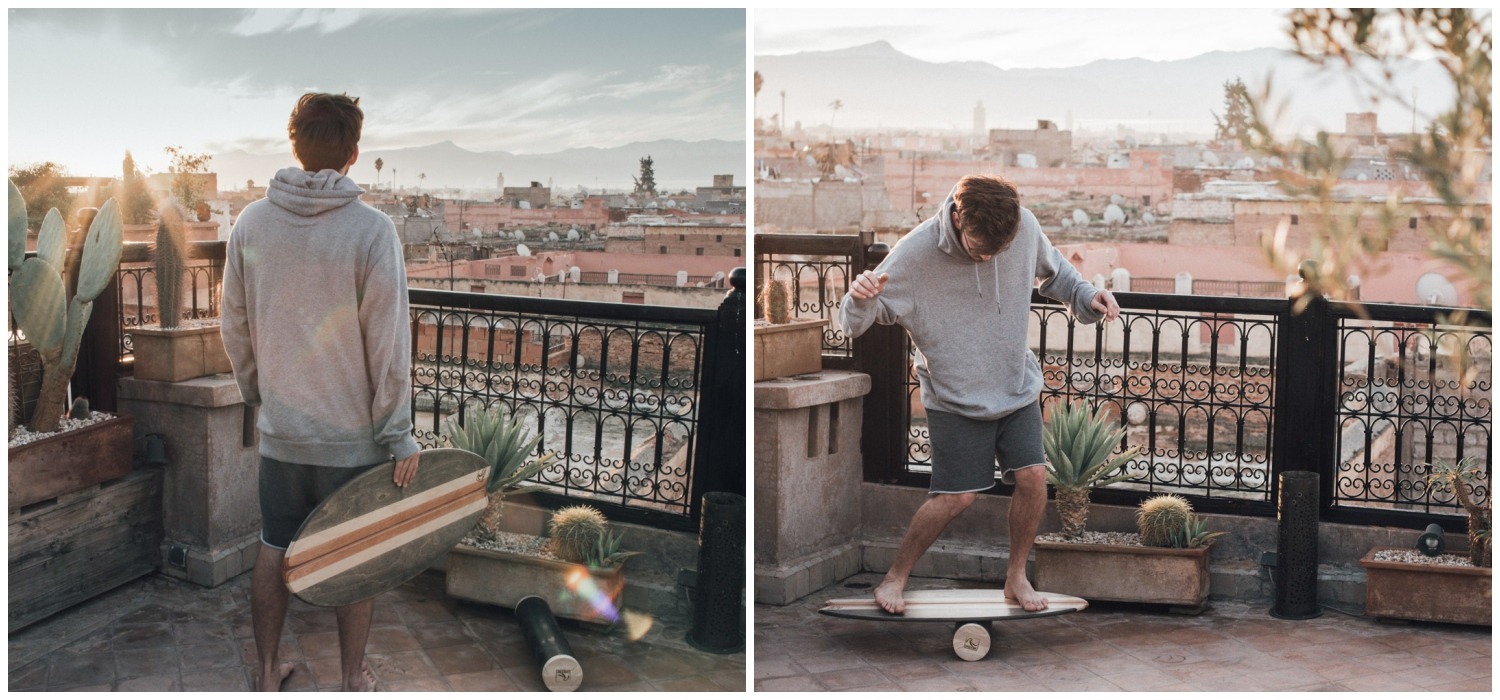
The first steps on a balance board
Take a rail, or someone’s hand. The first attempts on a balance board are brutal. Try to focus on your position on the board and feel the movement in your hips and legs. Your muscles are not used to these forces but the state of being totally unstable vanishes soon, trust me. After approximately 5 minutes on the balance board, you’ll feel the difference.
You first movements
Now that you feel half-way stable and safe on the board allow yourself to go one step further. While balancing, feel how the board moves as soon as you change the position of your feet. Play around with exactly that and slowly get used to the new feeling. After a few times on the board and moving your feet position, you also get used to that. Your balance for surfing improves whilst having fun in your living room, or wherever you took your balance board.
Getting adventurous
I am pretty confident moving my feet around, going into squat as well as in deep surf position but there are people going crazy on balance boards. I saw yoga postures on the balance board, 180s and many more crazy things. Here you can get some inspiration if you feel a little adventurous.
In a nutshell, I can say that the balance board helped me heaps to improve my balance. After three months on the board on a regular basis, my first wave on the next trip was one of the best ones, I’ve ever surfed and the positioning on the board didn’t feel weird but somehow like on the balance board. The surf preparation training helped a lot!
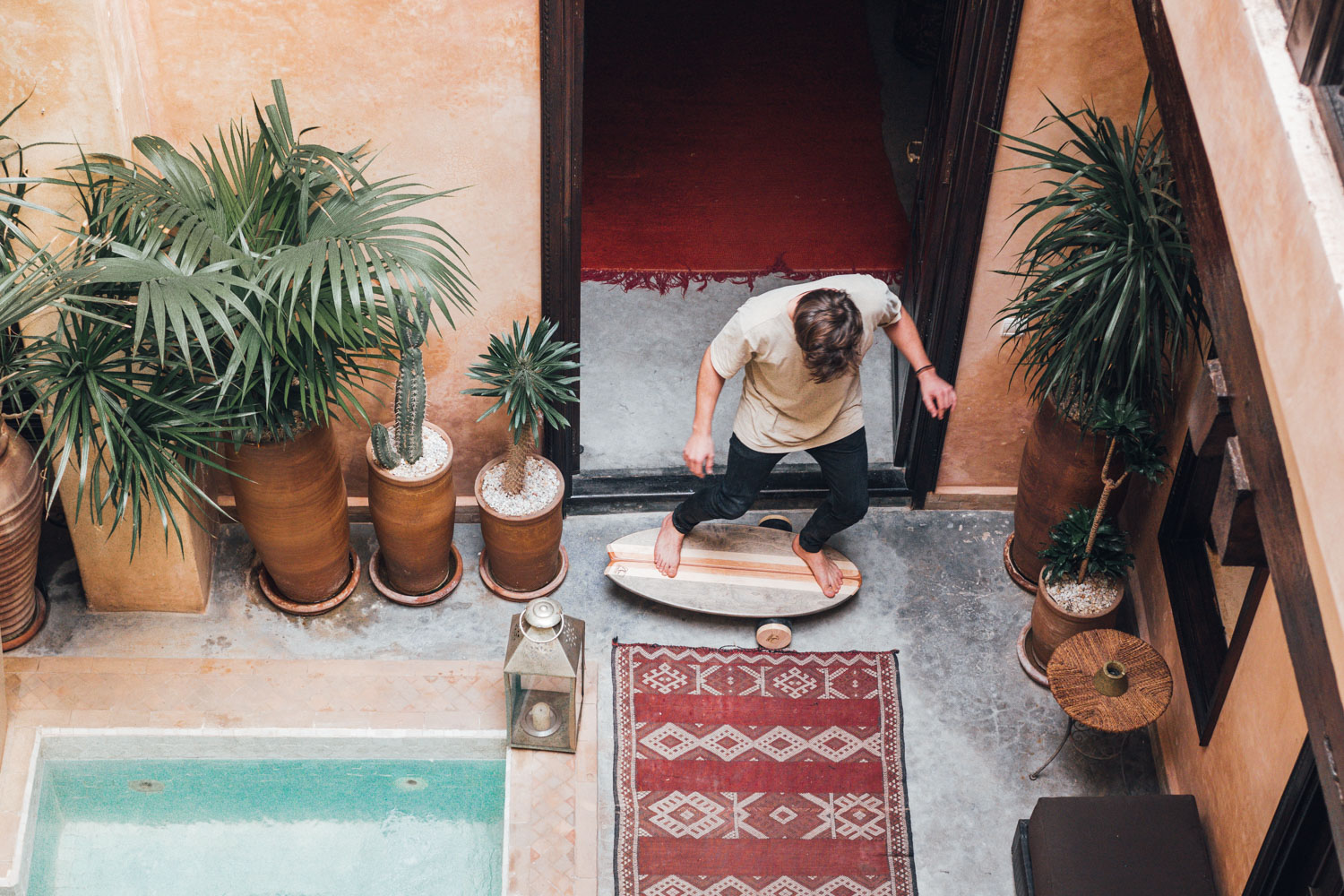
To be completely transparent here: We endorse the company ‘Balance Bredder’ and use one of their hand-made boards for free. That for a good reason!
Let’s jump to the next part to further improve your balance for surfing.
Surfing Exercises to Improve Balance – Single-Leg Workout
Single leg workout is an essential cornerstone for exercises to improve balance for surfing. Strong legs are important to equal out bumps in the water, they are crucial for bringing power on the board and the basis for all turns. Single leg exercises work towards all those goals and also work on an improved balance for surfing at the same time.
In our surf training workout, I recommend a handful of single-leg workouts. Here, I will share one of my favorite exercises – jumping lunges!
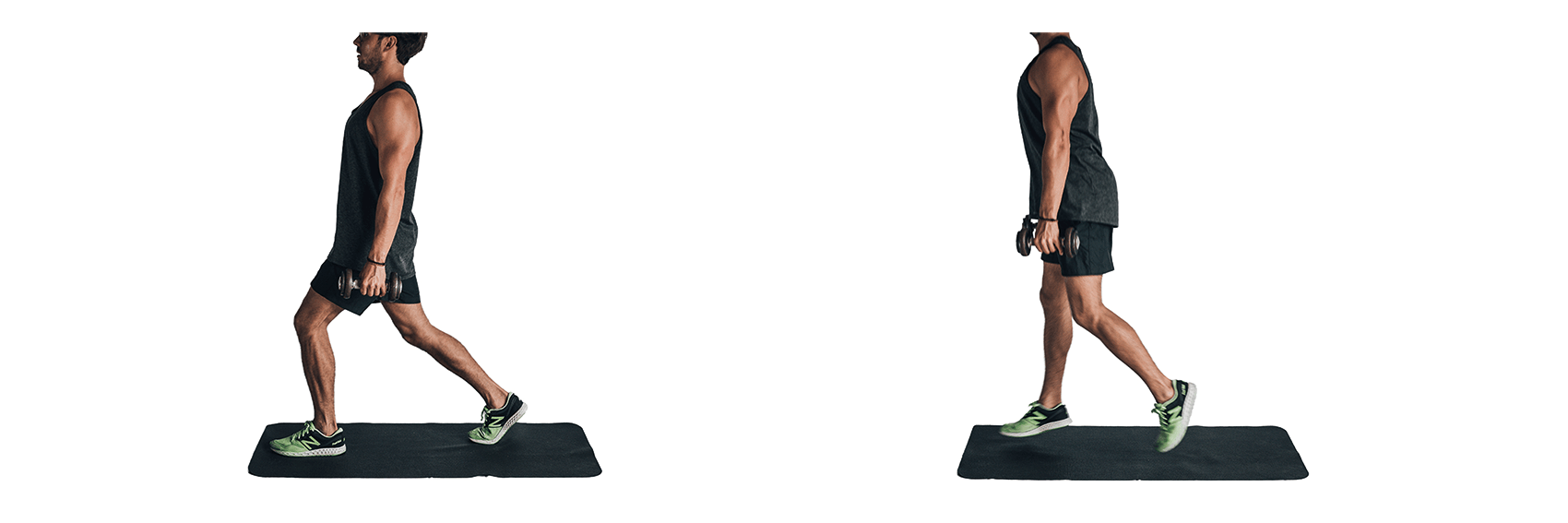
Take a barbell across your shoulders or two dumbbells/kettlebells in your hands (you can also do the exercise without additional weights, then, just go for a few more reps). With one foot forward and the other back, standing with a slight bend. Quickly change foot positions with a little jump. Change foot positions quickly and explosively.
Do 12-20 jump lunges then rest a little and repeat so that you have 3-4 sets. This exercise is the perfect addition for your training. They can easily be done after a run, after or during your gym or yoga session.
Tony Hawk, go for a ride!
Surfing requires a pretty special form of balance, that is hard to replicate but skating comes pretty damn close to it. You have a skateboard a longboard or even a surf skate? Use it! You’ll feel a massive difference when back in the deep blue.
Skating makes you also familiar with the feeling of standing on a board and teaches your balance at the same time. It is literally one of the best exercises to improve balance for surfing! Leave your bike at home, for a short distance you also don’t need the metro, so get your skates out as soon as the weather is good enough.
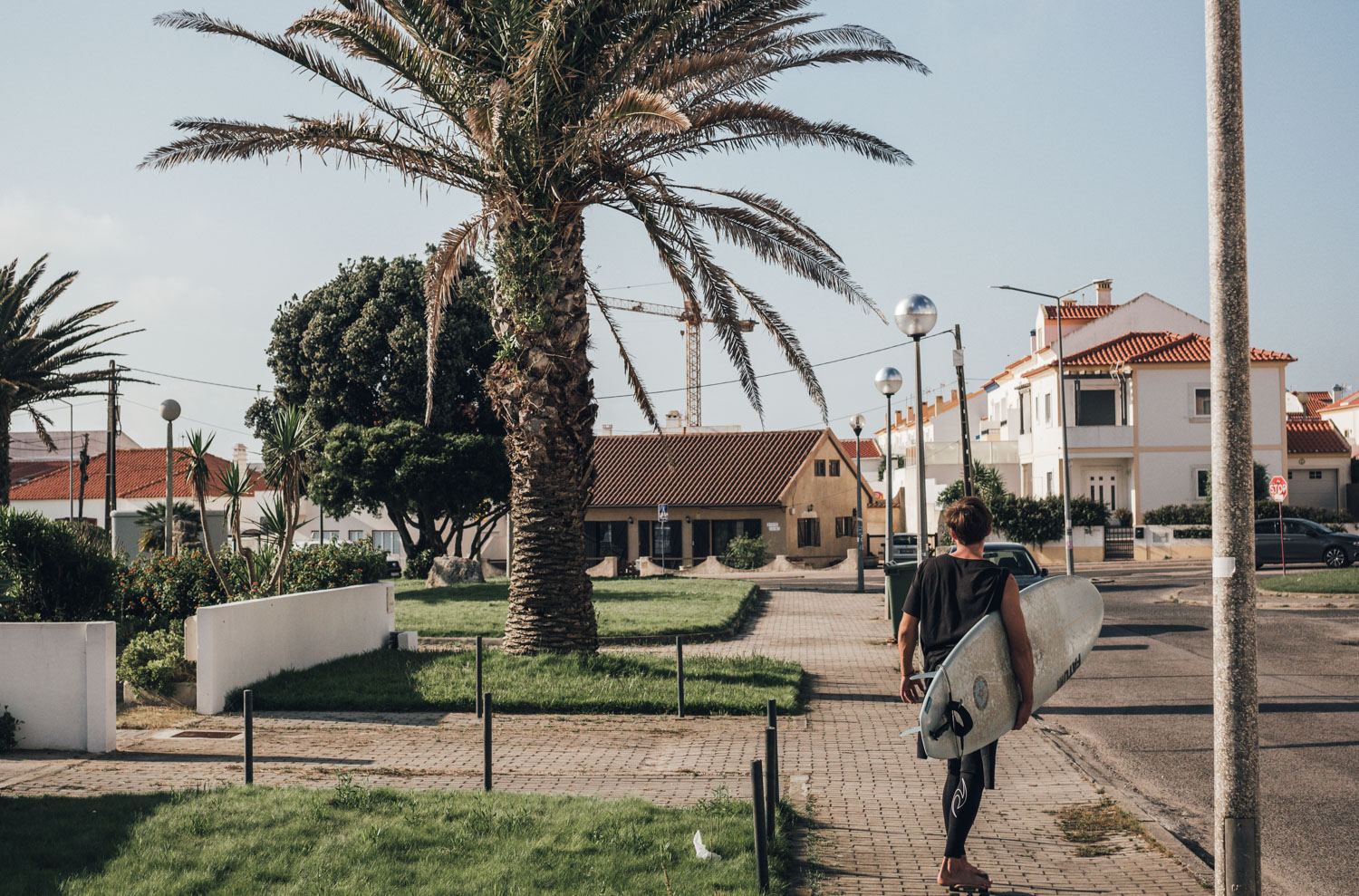
For this article, I am primarily highlighting the balance benefits of skating for surf but there are many more. One of that is that skating is one of the very few sports activities that practice flow, which is also essential for a good surf session. These gentle movements, performed by your upper and lower body, generate speed and forward momentum.
Yoga – Challenge Yourself!
Whenever I practiced yoga it felt great but I somehow never took time for it, or never ‘really felt like it’. I solely did Yoga on trips when the surroundings were perfect with the sound of the ocean in the background. Of course, these are still the sessions that are most enjoyable, ideally before or after a surf session.
At the beginning of the year, I decided (actually Ani decided for us), to include Yoga in our daily routine. We started almost every day with a short Yoga session (10-30 minutes) and soon we completed our 30 days Yoga challenge.
Since completing it, we practice Yoga on many mornings and simply love it. You feel more energized, more flexible and more conscious of your body as well as yourself.
Beyond that, Yoga stretches your muscles which helps to prevent pain and works towards an improved balance as well.
See Yoga not just something you do here and there but see it as a great investment in your later life as it gets harder the older you get to work on balance, flexibility, and consciousness.
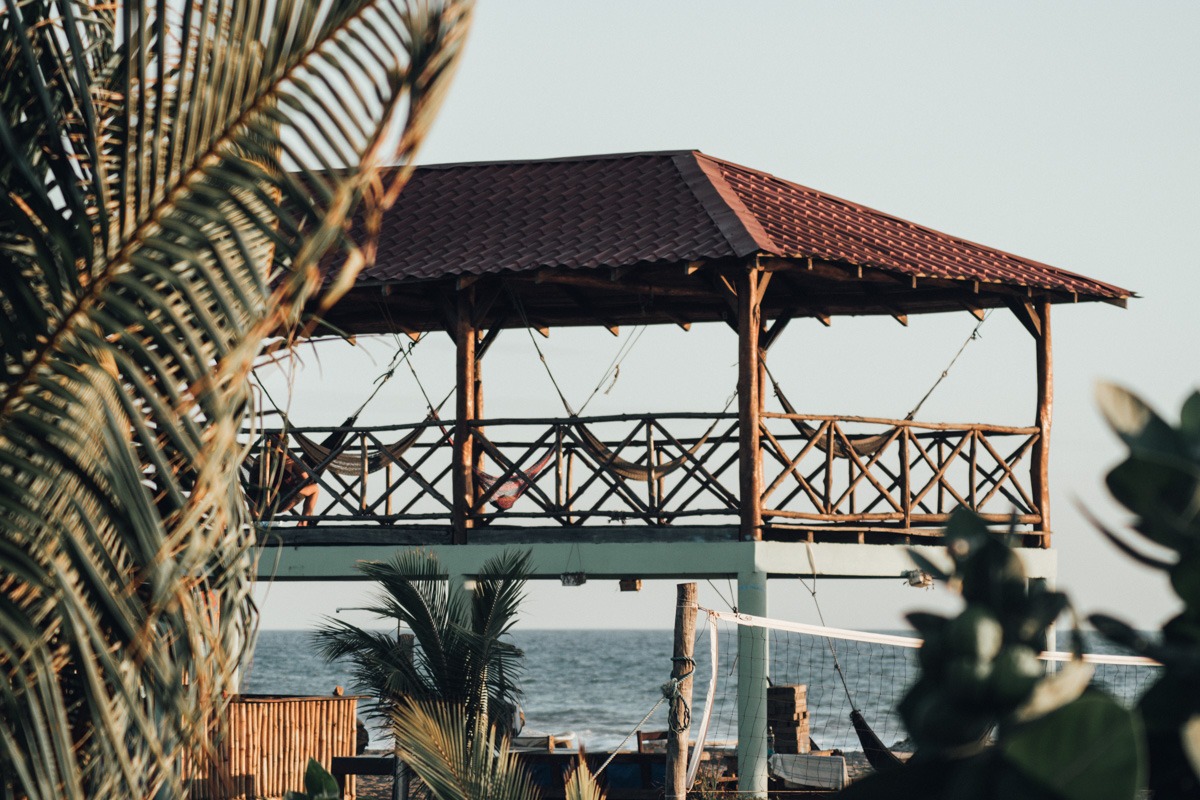
Tips for getting started with Yoga
Take it easy in the beginning! Yoga is more complex than it might seem at first. Executing positions that you are yet not ready for, will most likely end in sacrificed execution. When you start off with Yoga for beginners and slow movements you soon will feel confident enough to approach the more complex, faster and harder positions and exercises.
To start, I took a few classes to have a more experienced person to watch me executing postures. Here, I had the possibility to get corrected, where I learned a lot from it.
Now, that I feel a little safer and roughly know how to execute the downward dog, the warrior and the cobra, I do most of the sessions home on my own.
Shameless plug: Find more tips on yoga, the balance board and many more surfing exercises in our brand new Surf Training eBook!
Slack Line – Use downtime in the park
Usually, I like to spend summers in Germany. The summers can be enjoyable and a big part of it is hanging out in parks on a sunny day with friends, having a barbecue and chats. Over the last years, I saw slack lines becoming increasingly popular!
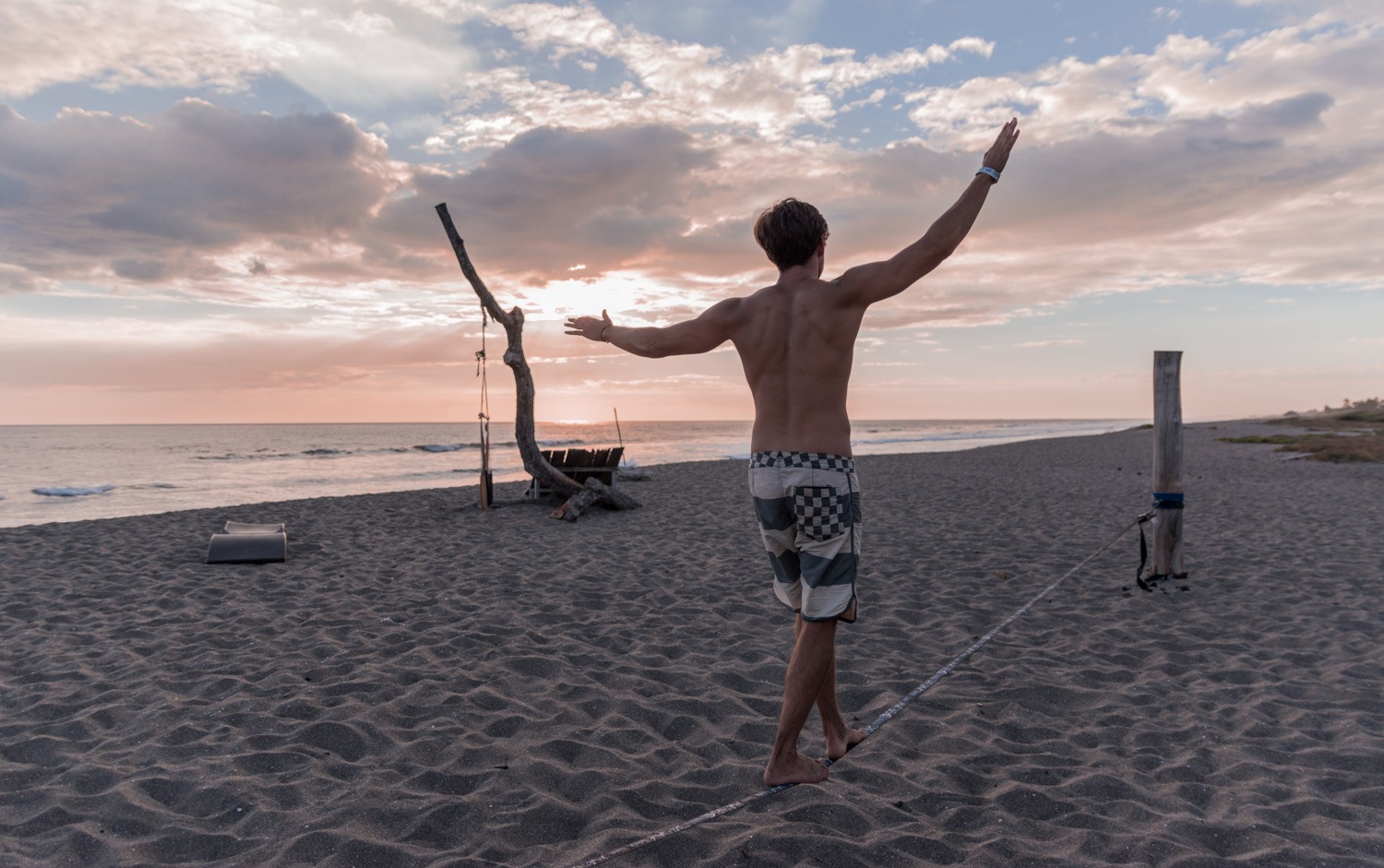
Slack Lines are not only a fun activity while in the park with friends, but it also works on some aspects that are crucial for surfing. Most of all these are balance, core strength and focus.
Similar to the balance board, the first attempts on the slackline are brutal. Your legs shiver and it seems impossible to gain balance. After a few minutes of trying, while holding a hand of a friend, the uncontrolled movements in your legs getting less and less.
Slackline tip: Look for a point further away than the end of the line and focus on it.
While making progress on the slackline you tend to forget that you strengthen your muscles in your feet, your legs, hips and your core. Besides, the impact – that you will feel on the next surf trip – working on these muscles are a great investment for your later life, again.
To sum things up I can say that all of the above will be greatly beneficial surfing exercises. Pick – at least – your favorite two and include them on your daily routine ideally a few weeks prior to your next surf trip. Once you did, please share your experience with us here in the comment section, or on Instagram!

